10-Minute Homemade Gochujang
How to make homemade gochujang in just 10 minutes! This easy Korean chili paste recipe provides a simple method while retaining the rich umami flavor of traditional gochujang. Perfect for homemade enthusiasts who prefer their own version over store-bought options.
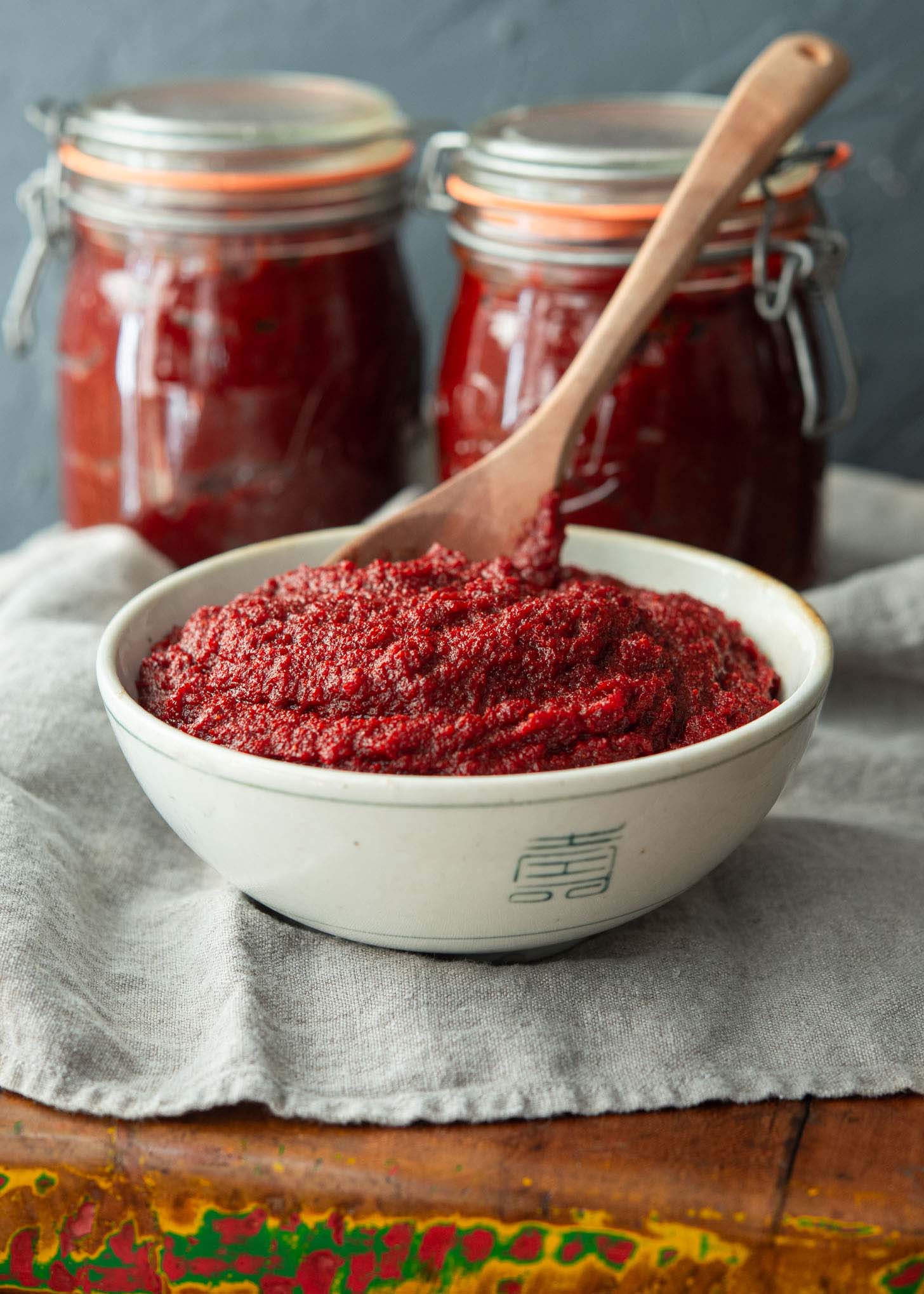
Last fall, I visited a small farming village near Seoul and took a class on making gochujang. I used to think making this authentic Korean chili paste at home was complicated and lengthy process.
But I learned how to make gochujang paste in a surprisingly quick and easy method. I have a simple recipe that only takes 10 minutes. Plus, it’s a great homemade gift to share with family and friends – they’ll love it!
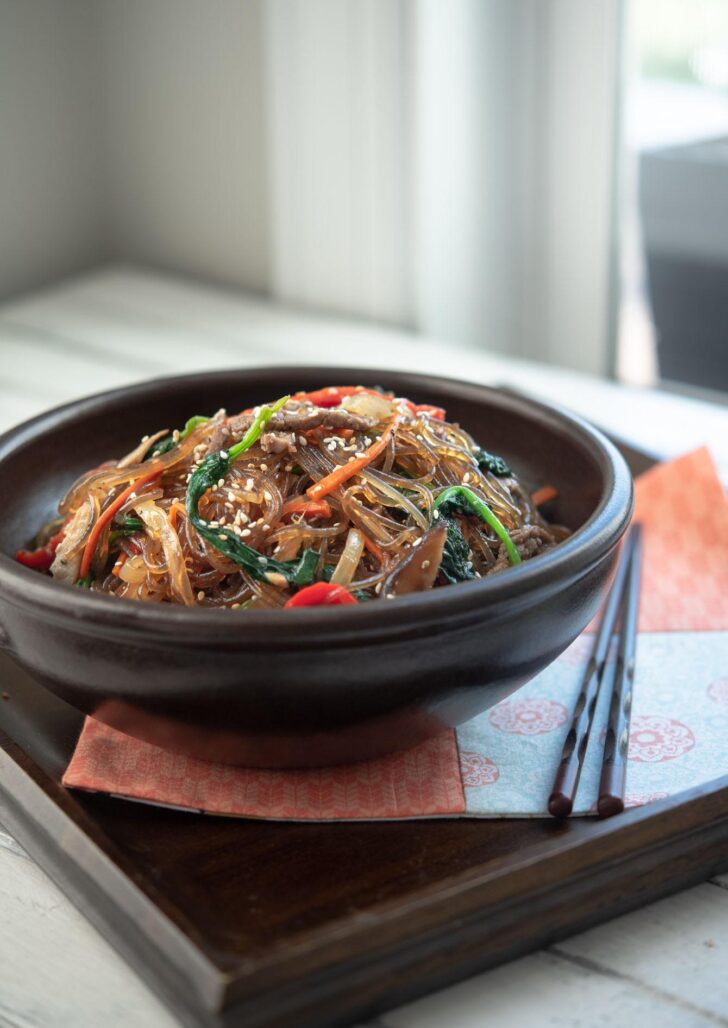
Get new recipes via email:
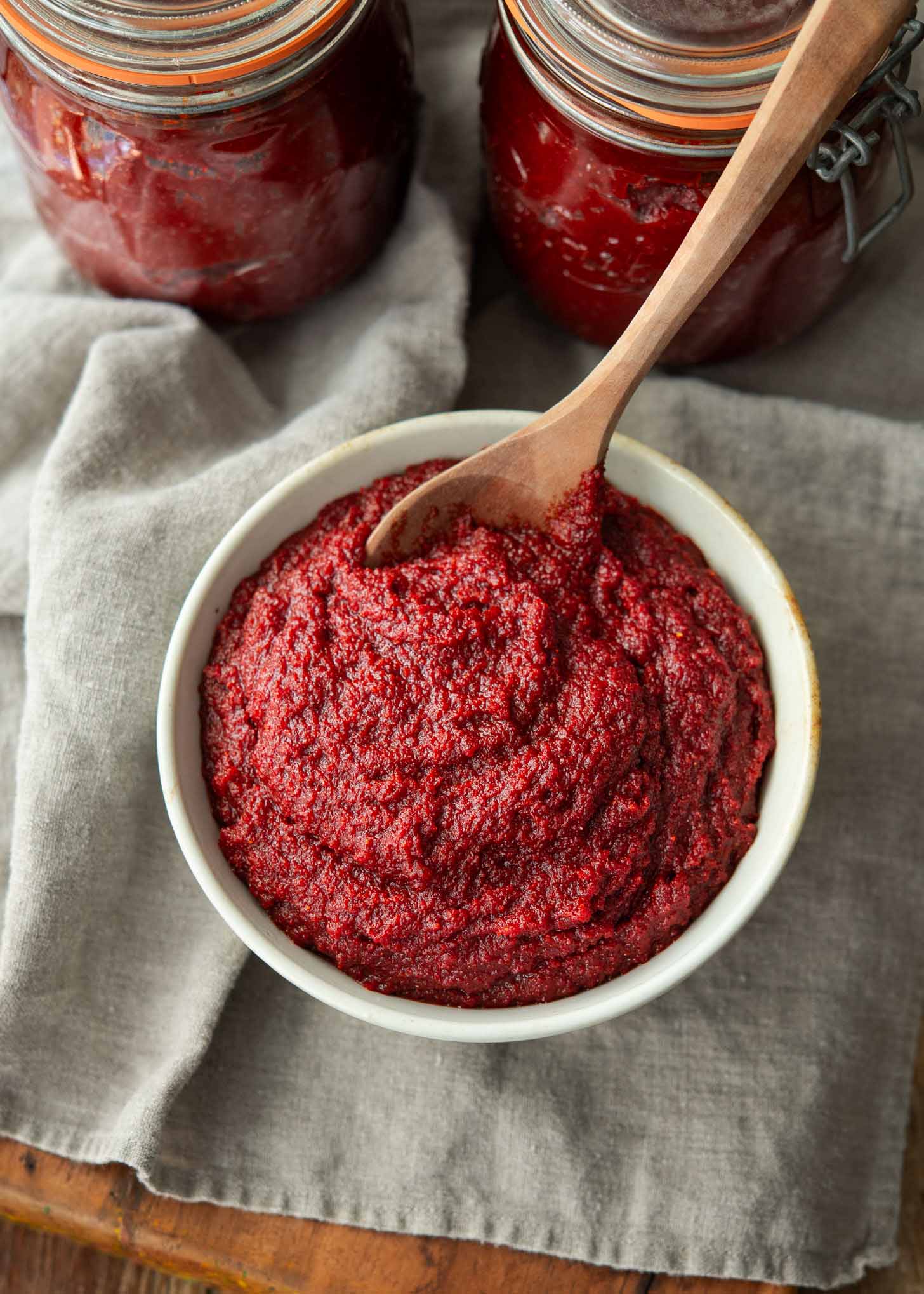
What is gochujang?
Gochujang (고추장), also called Korean red chili paste, is an essential condiment in Korean cooking. It’s made from chili peppers, fermented soybeans, rice, and salt.
This Korean hot pepper paste is thick and red. It tastes salty, spicy, and a little sweet. You use it to add flavor to other foods, like making sauces or seasoning dishes. People love it in foods like bibimbap and Korean fried chicken.
You can find gochujang paste ready-made in Korean stores or online, but homemade gochujang is the best! Making a little bit at home isn’t hard at all. Once you try making it yourself, you won’t want to go back to store-bought!
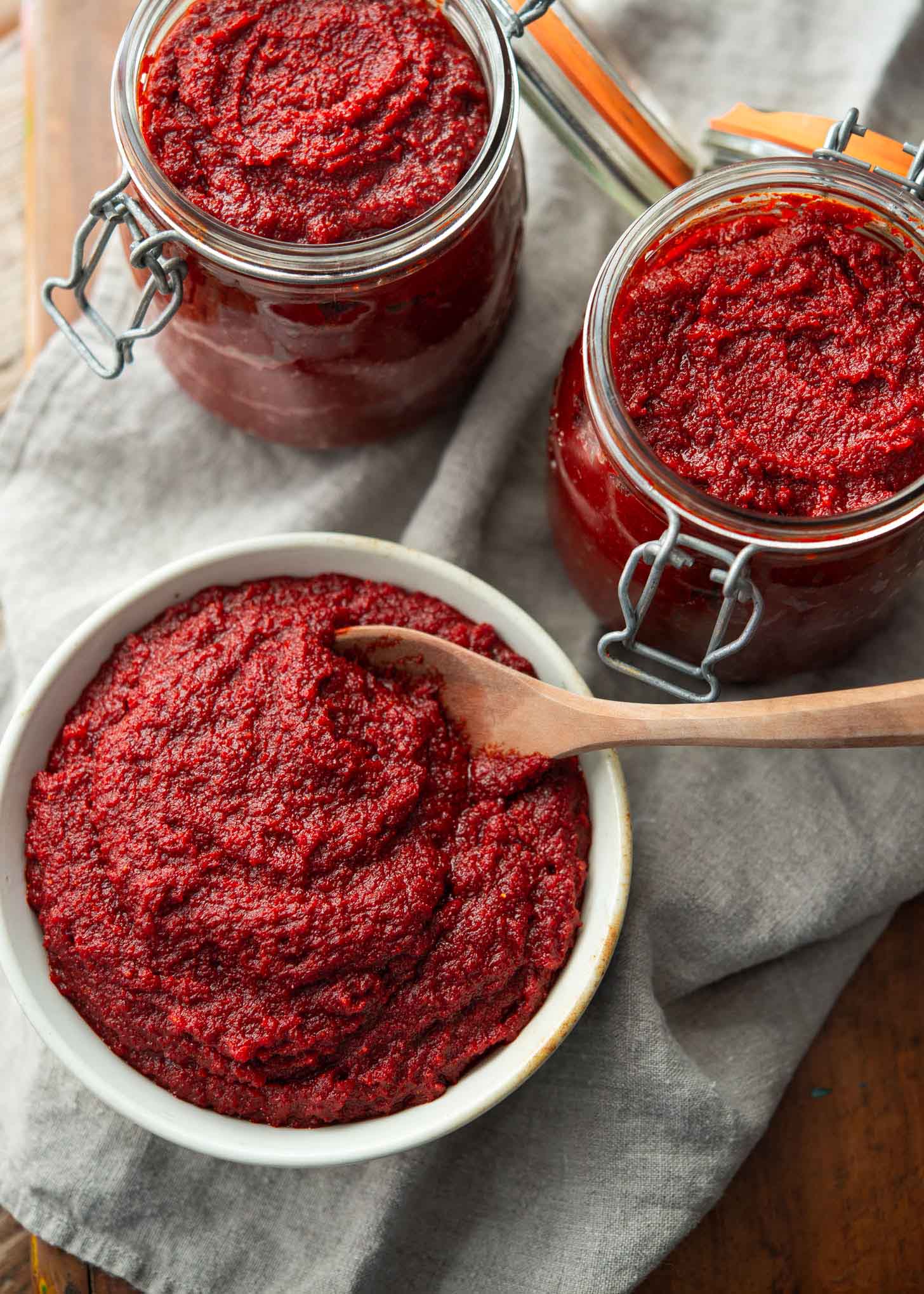
Gochujang Ingredients
You can find gochujang recipe ingredients at Korean stores or large Asian markets. If not, online stores are a convenient option.
Gochugaru (Korean fine chili powder)
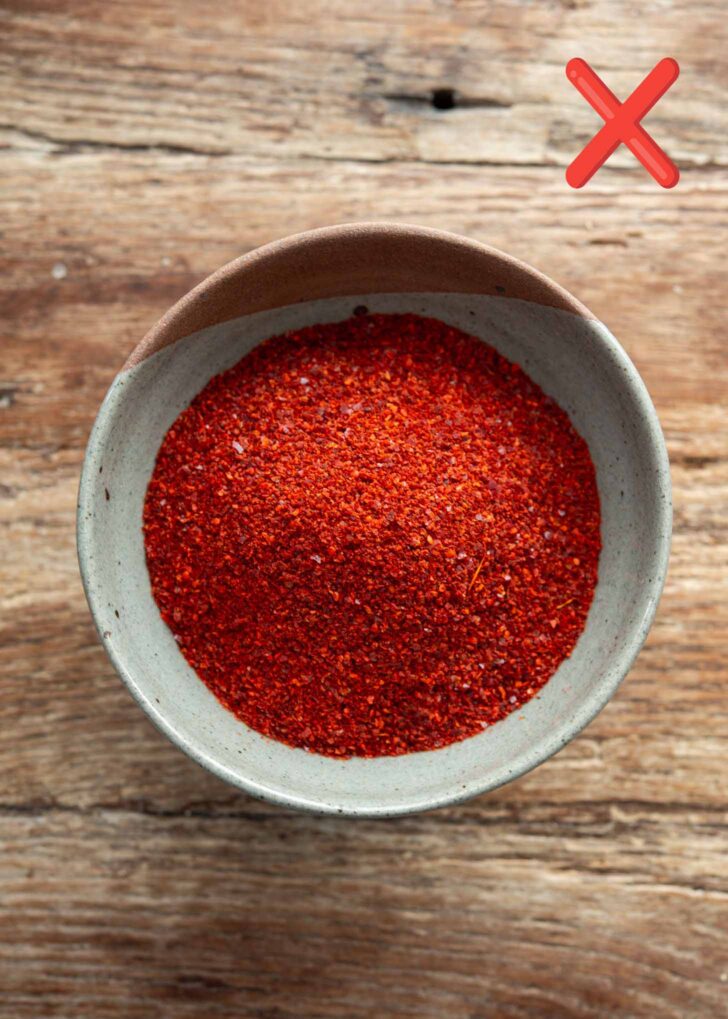
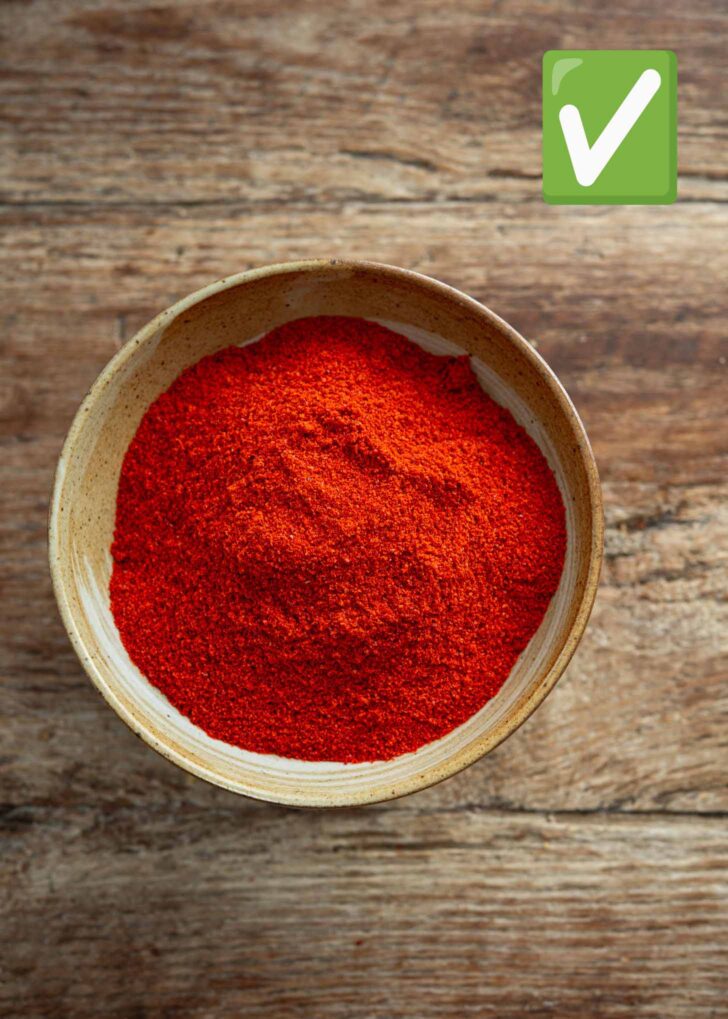
Selecting the appropriate type of Korean chili powder (gochugaru) is crucial for making gochujang paste. There are mainly two types: flakes and powder.
In Korean cooking, coarse chili flakes are more commonly used, but these aren’t suitable for gochujang paste. Instead, you’ll need a finely powdered variety known as goun-gochugaru (고운 고춧가루), which is specifically used for making gochujang.
Fermented Soybean Powder (Mejugaru)
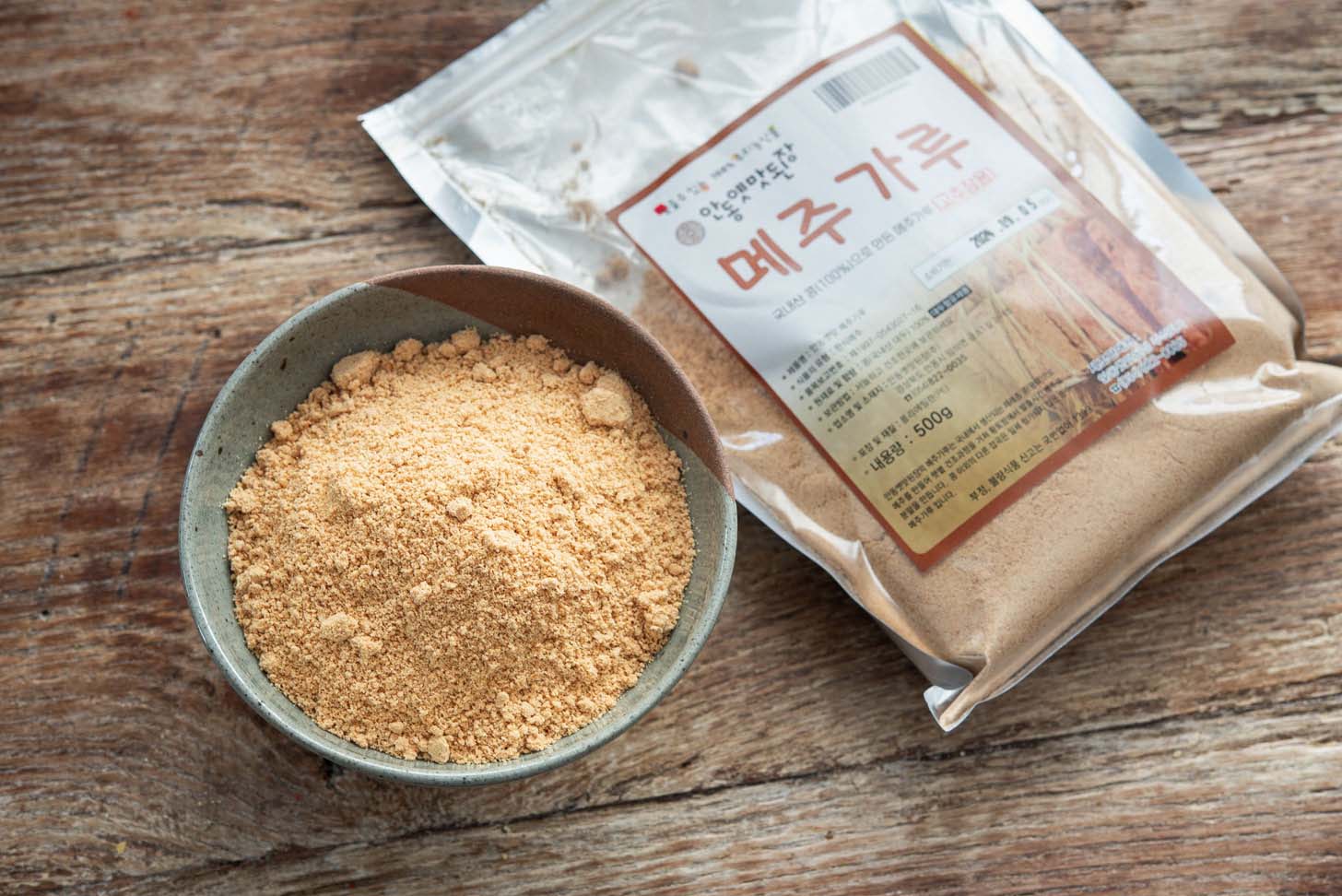
This finely ground soybean powder is made from fermented soybeans and is vital for making this recipe. It introduces deep, earthy flavors and essential umami to the paste. Mejugaru (메주가루) also thickens the paste to the right consistency and enhances the fermentation of the entire mix.
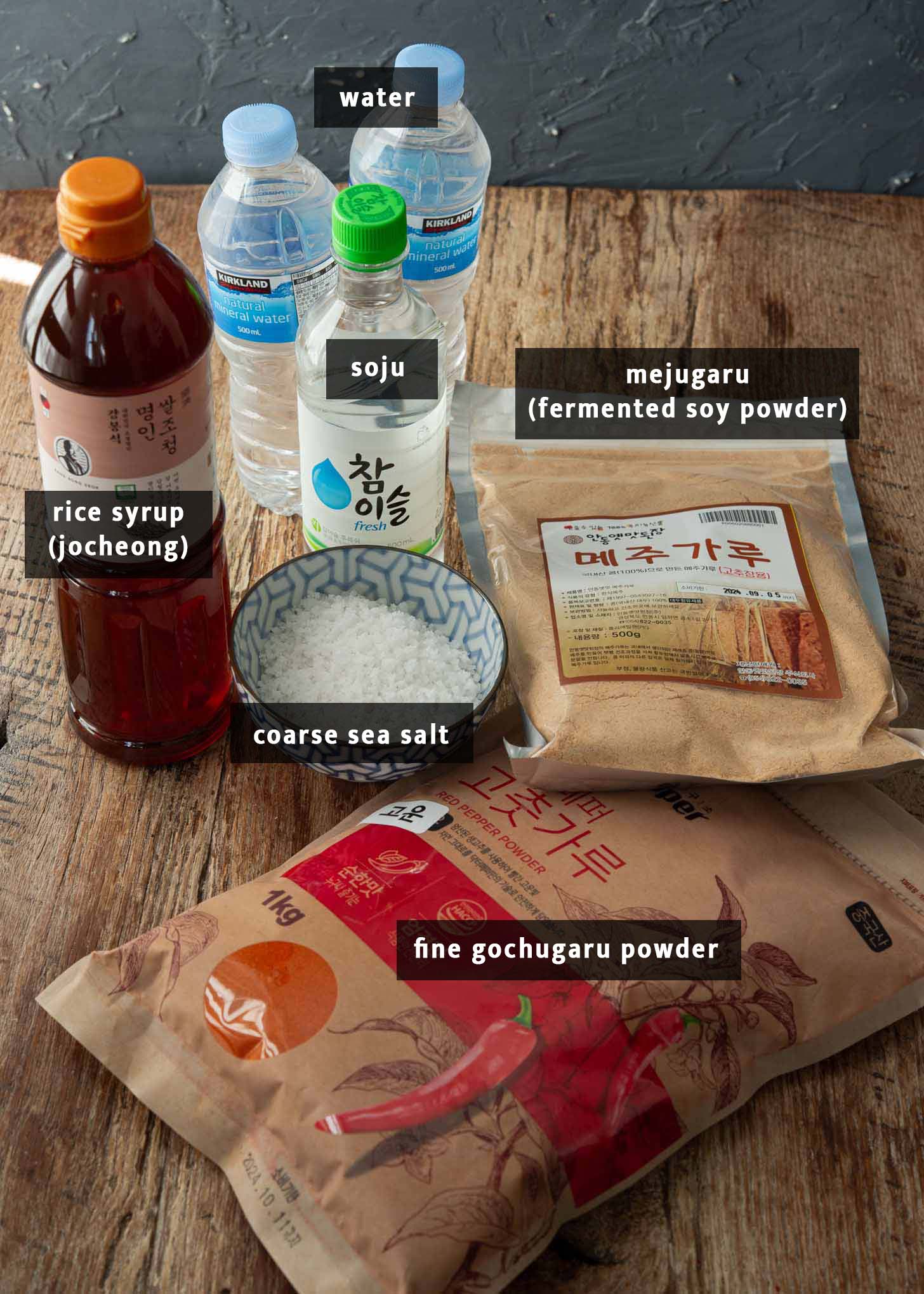
Rice Syrup (Jocheong)
Jocheong (조청) is a thick, sweet syrup made from sticky rice, similar to honey but even thicker than maple syrup. It adds sweetness to gochujang, making it smooth and shiny. This rice syrup is crucial for binding all the ingredients together to achieve just the right consistency—not too dry and not too runny.
Korean Coarse Sea salt (cheonilyum)
This isn’t your average table salt. It’s a mineral-rich sea salt, specifically from Korea, and is essential for flavor. Make sure to use the type with the bitter brine removed. Korean coarse sea salt enhances the taste and also plays a role in preservation process.
Soju (Korean Alcohol)
A traditional Korean alcohol, clear and light. In gochujang, soju (소주) acts as a preservative, preventing unwanted bacteria during fermentation. Its subtle flavor helps to round out the taste of the chili paste and contributes to a smoother consistency.
If soju is not available, sake is a good substitute. Sake has a similar profile in terms of its mild flavor and alcohol content.
Korean Plum Extract (Maeshil-Cheong)
This plum extract (매실청) adds a unique fruity and slightly tangy flavor to your gochujang. The natural sugars in the plum extract are perfect for fermentation, helping to develop the rich, complex flavors over time. It’s a secret ingredient that makes your chili paste stand out.
How to make Gochujang (Easy Method)
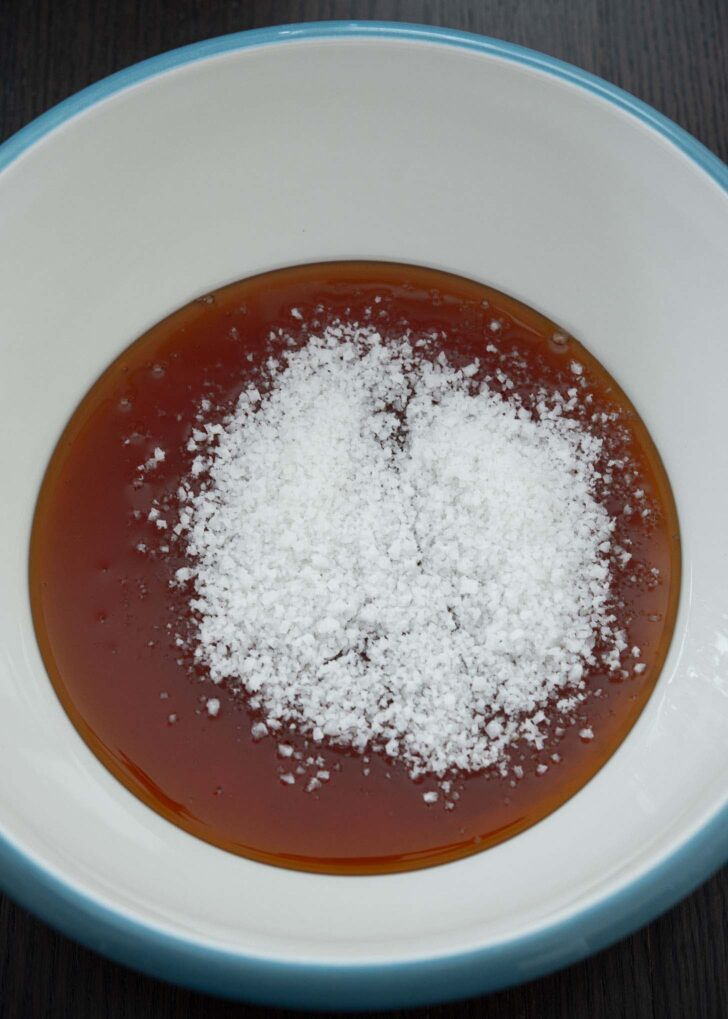
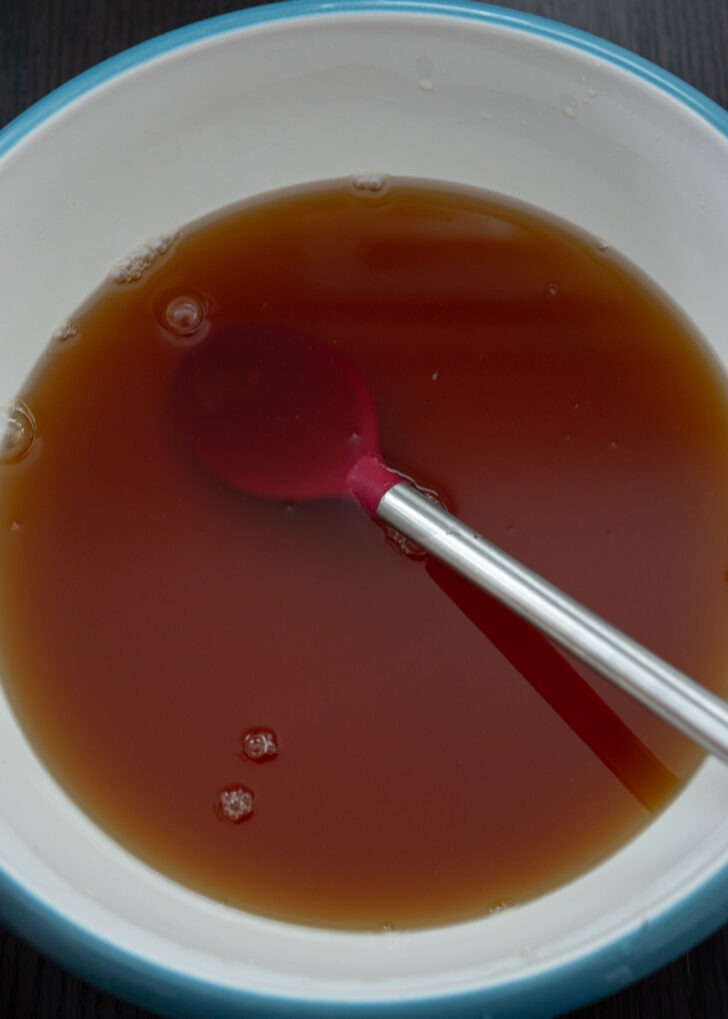
- Start by getting a large mixing bowl, big enough to hold 4 quarts (or about 4 liters). In it, combine the rice syrup and salt.
- Then, pour in warm water, stirring well to completely dissolve the salt and blend it with the syrup.
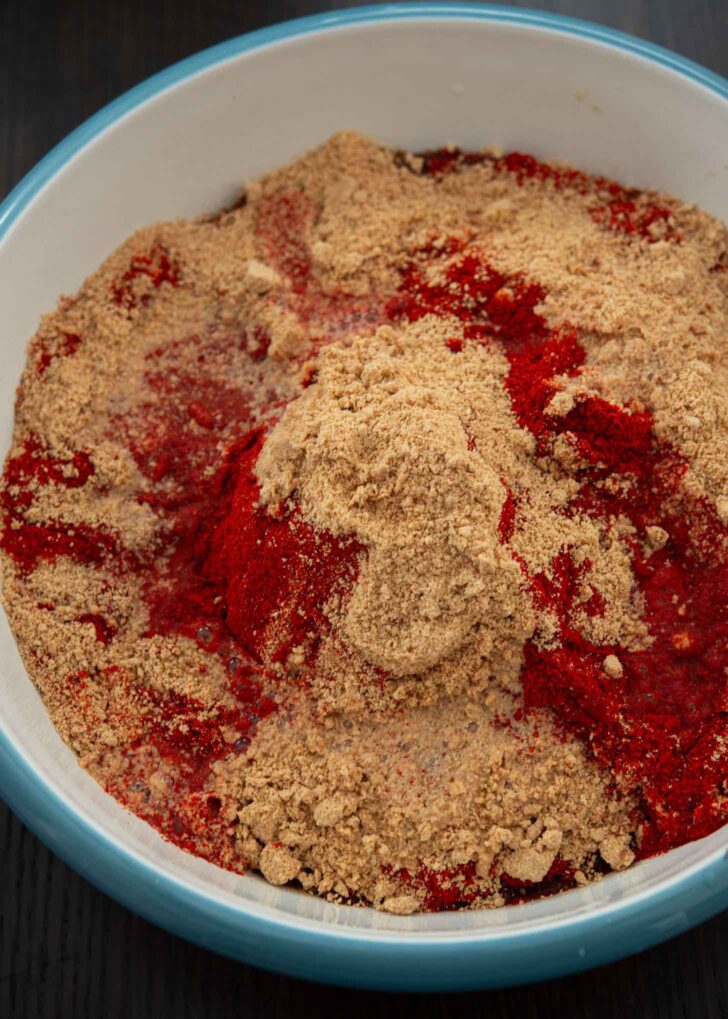
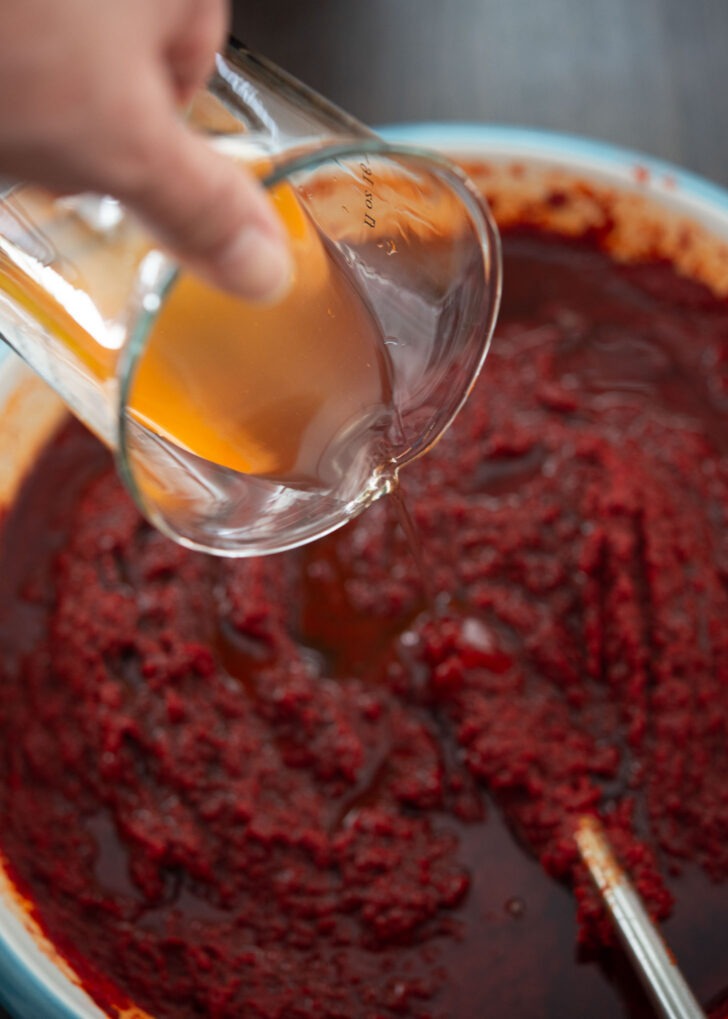
- Next, add the chili powder, fermented soybean powder (sifting it first is a good idea), soju, and plum syrup.
- Mix everything thoroughly with a spoon, ensuring there are no clumps of dry powder or crumbs left. Keep stirring until you get a smooth, even mixture.
How to Store Gochujang
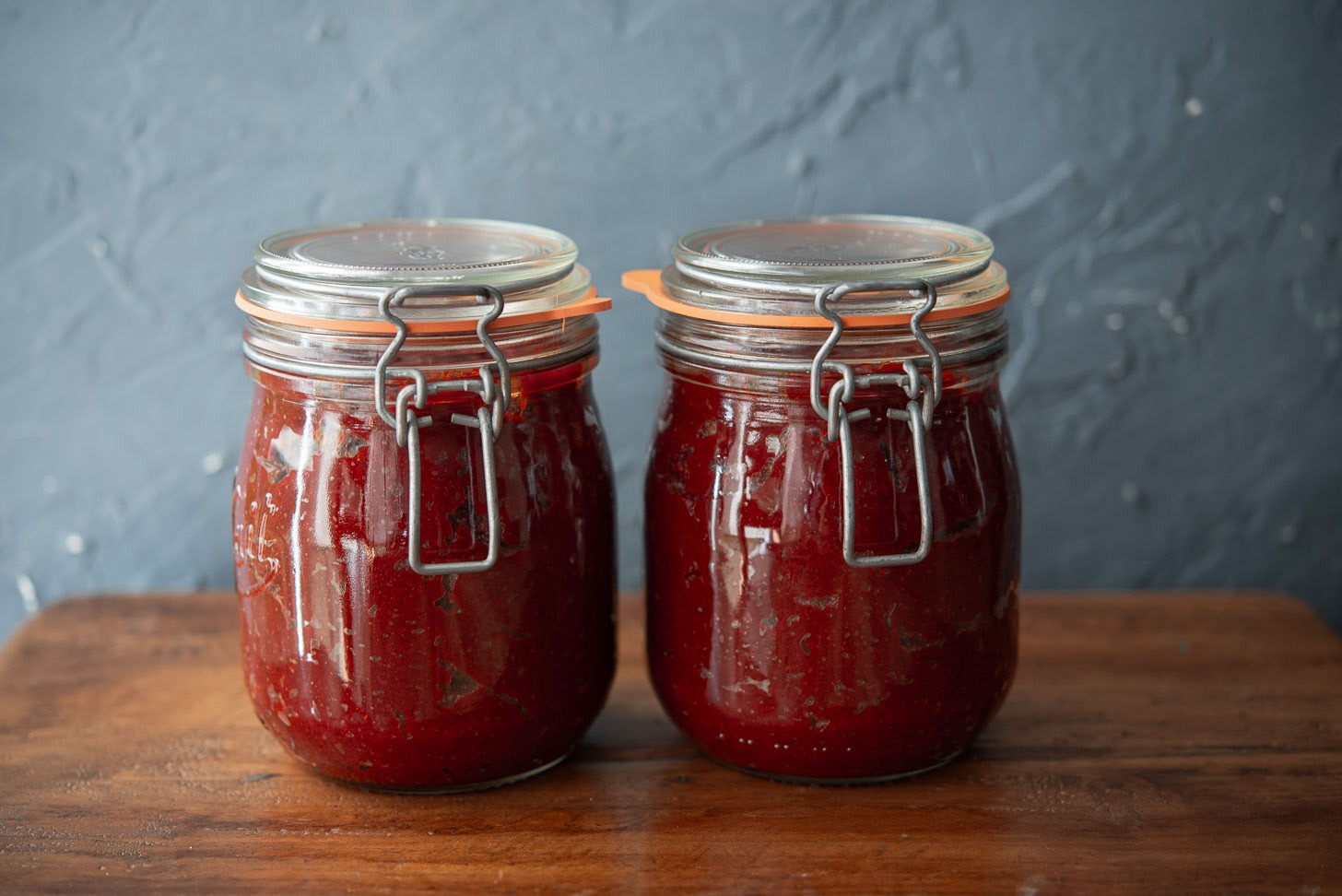
After making your gochujang, storage is simple.
- First, divide the paste into several airtight containers and seal them. Allow the containers to sit at room temperature for 3 days, then transfer them to the refrigerator. Stored this way, your chili paste can last up to a year.
- You can start using it immediately in your dishes, and you’ll notice the flavor becomes richer and deeper over time due to fermentation.
- If you prefer to store it at room temperature for a long period, increase the salt and soju by 15% to ensure better preservation and prevent mold. Make sure to store your chili paste in a dark and cool place indoors.
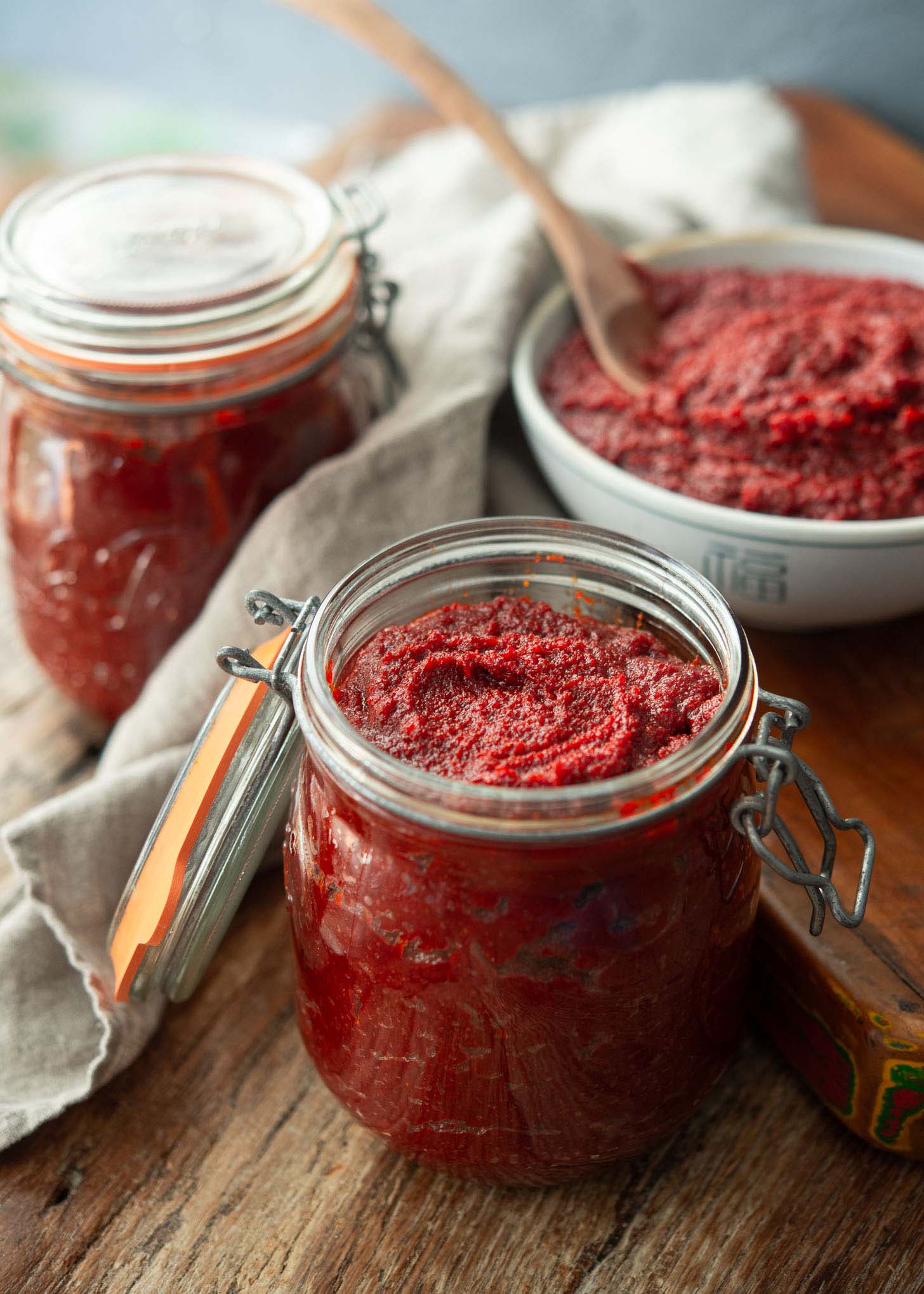
Helpful Tips
- Jocheong Syrup: If the jocheong syrup is too thick to pour, warm the bottle in hot water. This will loosen the syrup, making it easier to squeeze out.
- Sifting soybean powder: To ensure a smooth mix, sift the mejugaru through a sieve to break up any clumps before combining it with other ingredients.
- Adjusting Quantity: This recipe yields about 14 cups of gochujang. If that’s too much, feel free to halve or quarter the recipe based on your needs.
Why This Recipe Works
- Simplified process. By using fermented soybean powder (mejugaru) and sweet rice syrup (jocheong), this recipe streamlines the traditional gochujang-making method, making it accessible to home cooks without compromising on flavor.
- Readily available ingredients. Utilizing pre-made ingredients such as fermented soybean powder and sweet rice syrup enables you to effortlessly prepare this homemade gochujang in minimal time.
- Authentic taste. Despite the simplified process, this homemade gochujang still captures the authentic blend of spicy, sweet, and umami flavors characteristic of traditional gochujang.
How to use Gochujang
Gochujang is versatile and adds a unique umami flavor to dishes. Unlike other Korean pastes like doenjang, which is salty and savory with an earthy flavor like miso, gochujang has a spicy, sweet, and rich taste with a kick of spicy heat.
To use gochujang, simply add it to soups, stews, and marinades for a spicy kick and depth of flavor. It’s also fantastic in sauces for noodles or stir-fries, giving your dishes a bold and delicious taste.
Start with a small amount and adjust according to your preference. Here are a few recipe ideas you can try.
- Spicy Korean pork (jeyuk bokkeum)
- Gochujang noodles
- NYT Gochujang Caramel Cookies
- Multi purpose Gochujang sauce
- Bibim Guksu (Korean cold noodles)
- Chicken Bulgogi (chicken bbq)
- Dakdoritang (chicken stew)
- Dakgangjeong (Korean chicken nuggets)
- Gogalbi (fried spicy mackerel)
Love this recipe? Rate it and share your experience in the comments below! On Instagram? Tag me to showcase your creation. For more delicious recipes, subscribe to our newsletter!
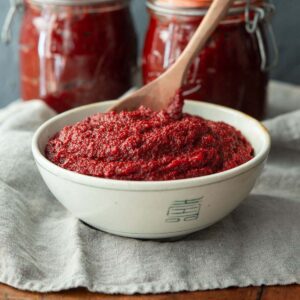
10-Minute Homemade Gochujang
Recipe Video
Ingredients
- 2 1/2 lb (1.2 kg) Korean rice syrup (jocheong)
- 1/2 cup (150 g) Korean coarse sea salt
- 4 1/4 cup (1 liter) mineral water, warm
- 2 1/4 lb (1 kg) Korean fine chili powder (goun-gochugaru)
- 1/3 lb (150 g) fermented soybean powder (mejugaru), sifted
- 1 cup (240 ml) Korean plum extract (maeshil cheong)
- 1 cup (240 ml) Korean alcohol (soju) , or sake
Equipment
- large mixing bowl about 4 quarts or higher capacity
- airtight containers for storage
Instructions
- In the large mixing bowl (more than 4 qt capacity), combine together the rice syrup and salt. Add warm water to the bowl. Stir well until the salt dissolves and mixes evenly with the syrup.
- Sift the fermented soybean powder into the bowl to avoid clumps. Add the chili powder, soju, and plum syrup to the mixture. Stir everything with a spoon until it's well mixed and smooth, making sure there are no dry spots or lumps. This recipe makes about 14 cups of gochujang paste.
To store the gochujang
- Divide the gochujang into several airtight containers and seal them tightly. Let these containers stay at room temperature for 3 days. After that, place them in the refrigerator. The gochujang can last up to 1 year when stored in the fridge.
- You can begin using the gochujang right away in your cooking. Over time, as it ferments, you'll find the flavor becomes more robust and developed.
- If you're keeping the gochujang at room temperature for an extended time, add about 10% more salt and soju for improved preservation and to avoid mold. Also, store it in a cool, dark indoor spot.


Great recipe. I cut mine in half because I don’t use it as much and don’t want it to go bad. It was delicious and went so well with all foods 🙂